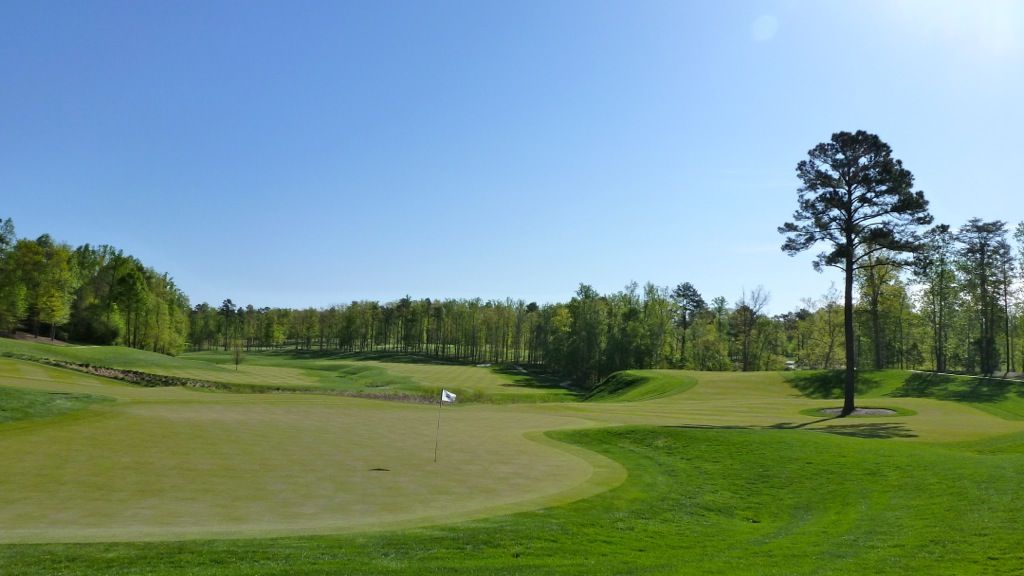Strategic design is alive at Kinloch. Man-made features sit naturally on the land to create decisions that force the golfer to consider the overt man-made hazards and then to question his decision once his ball has reacted with the land. The type of golf course that one must play many times to understand. I can imagine spending a few days on property playing the course over and over would bring the golf course and its strategies to life. I know there are several shots I hope I have the opportunity to play again.
The level of green contour was, to me, surprising. When one considers many of today's top modern designs, they have several, if not many, greens that border on unfair. I think Lester designed Kinloch's greens to be played FAST. Their tilts are subtle and for the most part there is little internal contour. Of course, there are exceptions -- the plateau on the 4th green, the spine on the 6th green, the rolls on the 12th green -- but the greens would (I think) be fairly uninteresting if they aren't firm/fast.
I have read that the main criticism of Kinloch is that there are simply TOO MANY split fairway type holes. I think we all know that the split-fairway hole is a very difficult one to execute well as all too often there is only a single realistic option and a second fairway that is maintained without reason. Of course, one would have to play these holes more than just once to really understand them, but I think the split fairway holes at Kinloch are ALL very well done. Equally important, pin position dictates the importance of picking a line.
On to the photo tour...
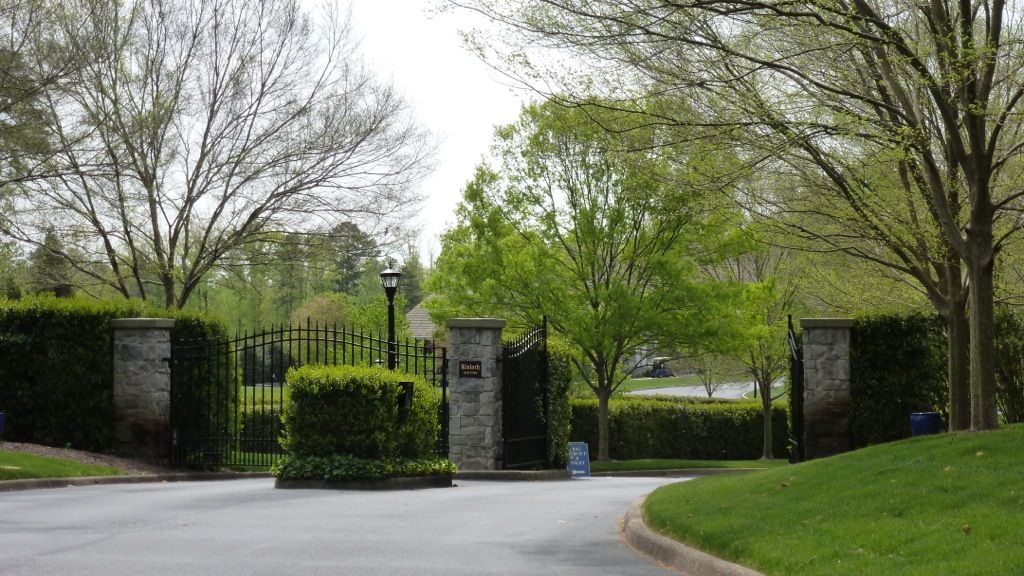
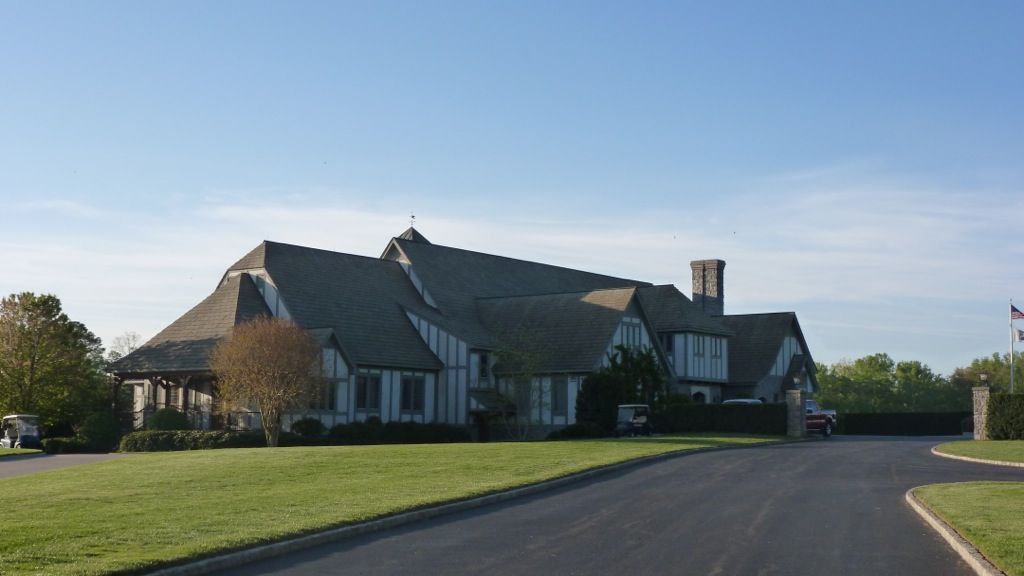

Handsome cabins complete with lit putting green:
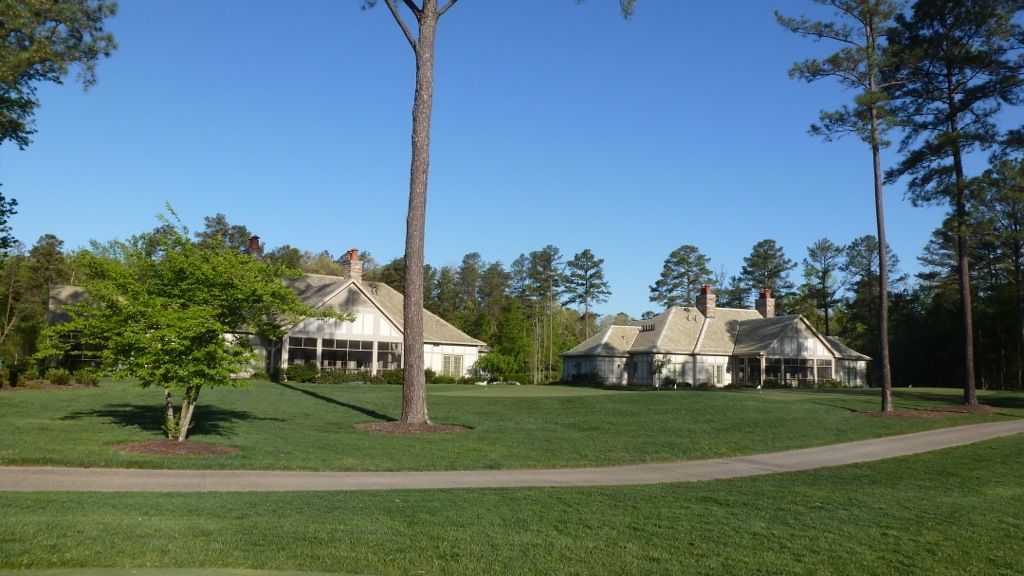
The approach to the up and over first:
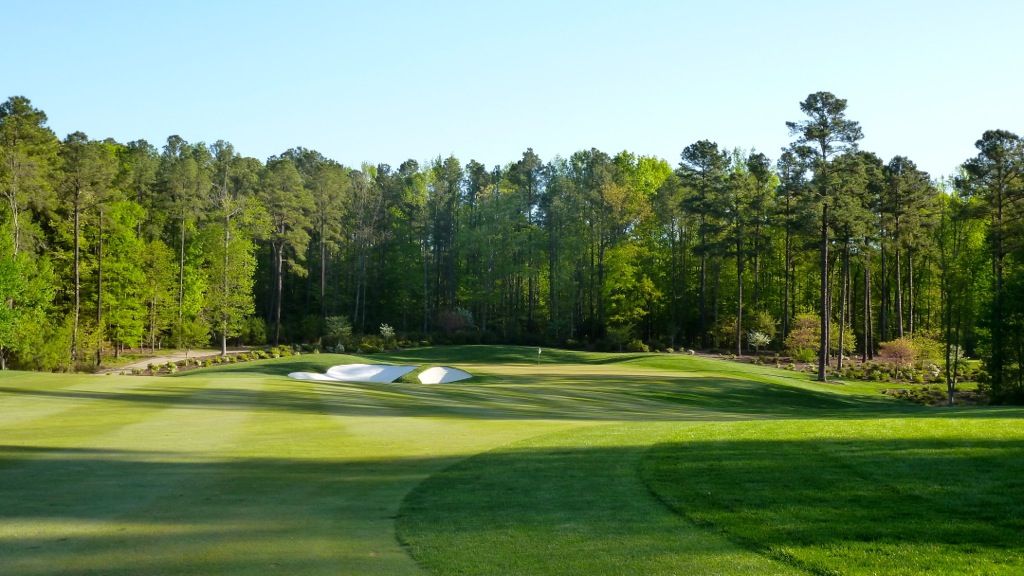
An excellent 'bottle hole' at the second, where a trio of bunkers splits the fairway. Playing to the left leaves an at-grade approach up the throat of the the green:
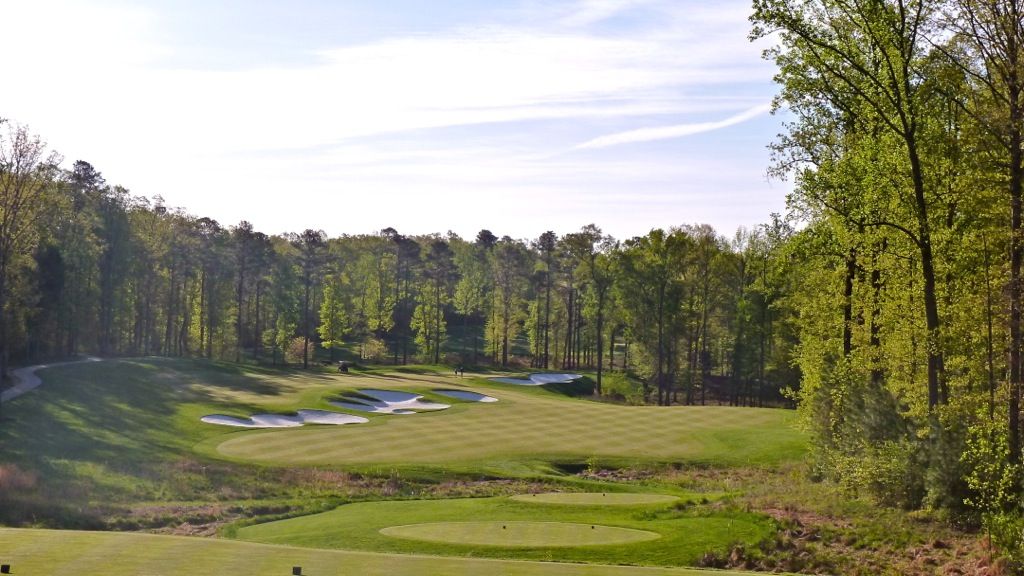
The mid-length par-5 3rd as seen from behind:
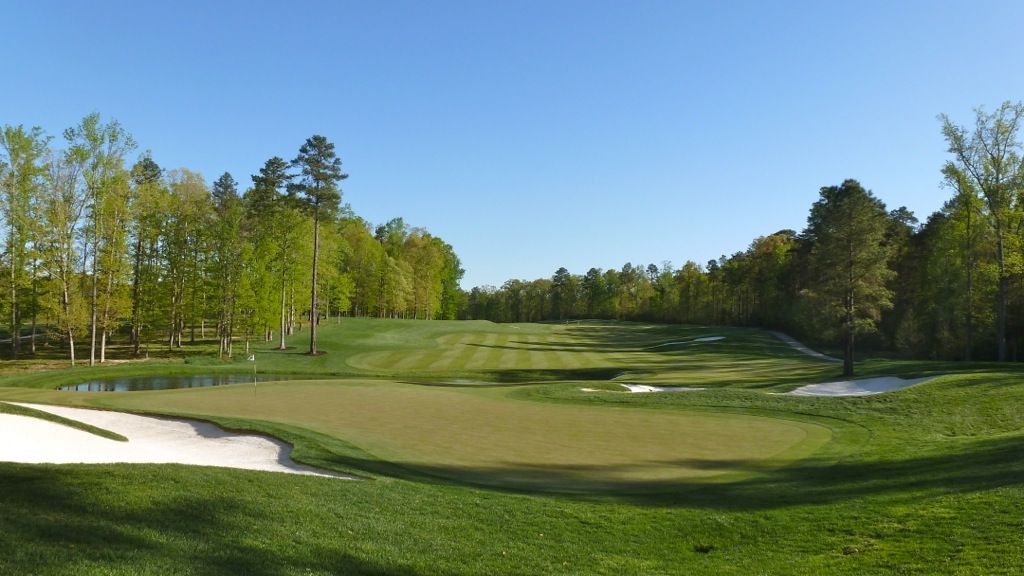
The 4th is clearly driveable for some and the decision to play left or right will be dictated by pin position. On this day a hybrid to the right left a simple sand wedge approach into the tilt of the green:
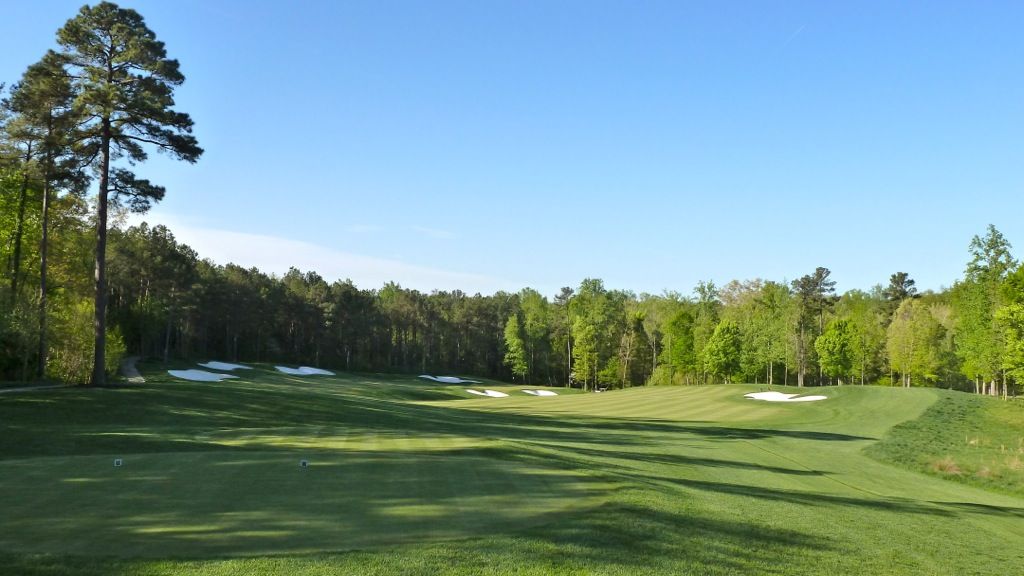
The uphill par-3 5th:

The par-4 6th is a forced lay-up for most, but the golfer must choose whether to lay-up right for the preferred angle or whether to challenge the narrower left portion of the fairway to leave a shorter approach:
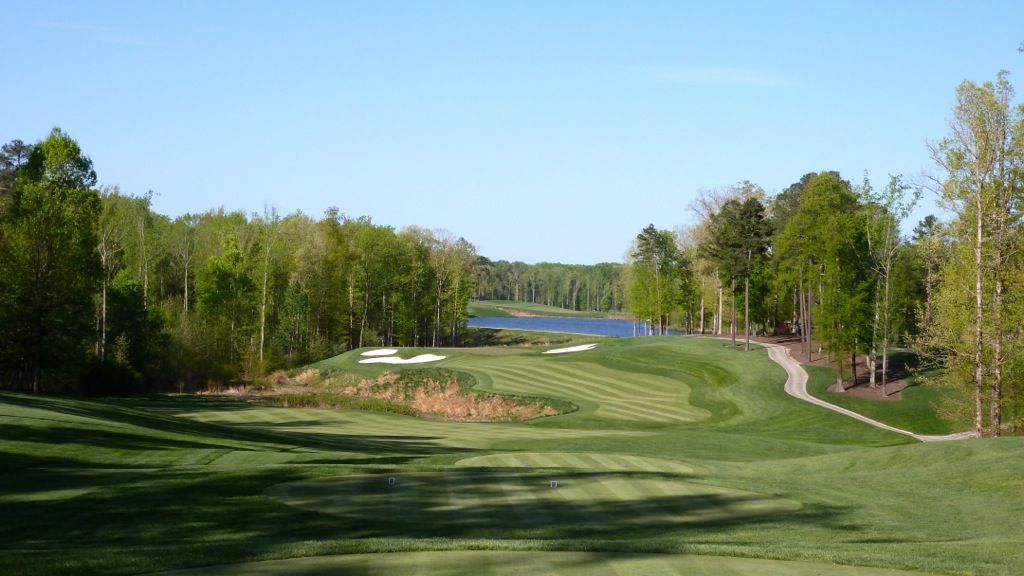
The par-3 7th can stretch to north of 230 yards, but plays to a more manageable 190 yards from the 6,500 yard set of tees:
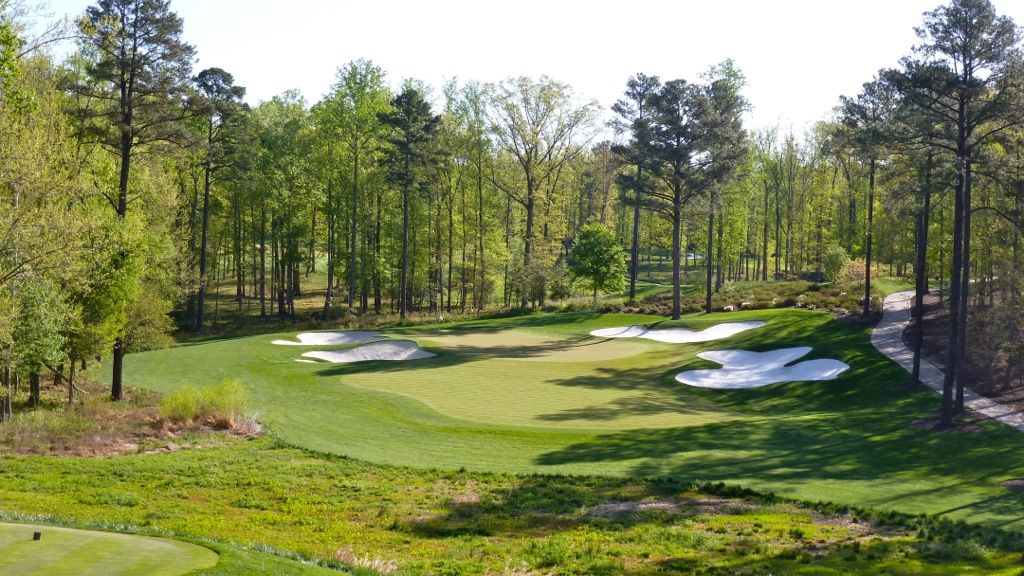
The 8th is a long par-4 where the grade of the fairway creates a speed-slot for golfers taking the bold line from the tee:
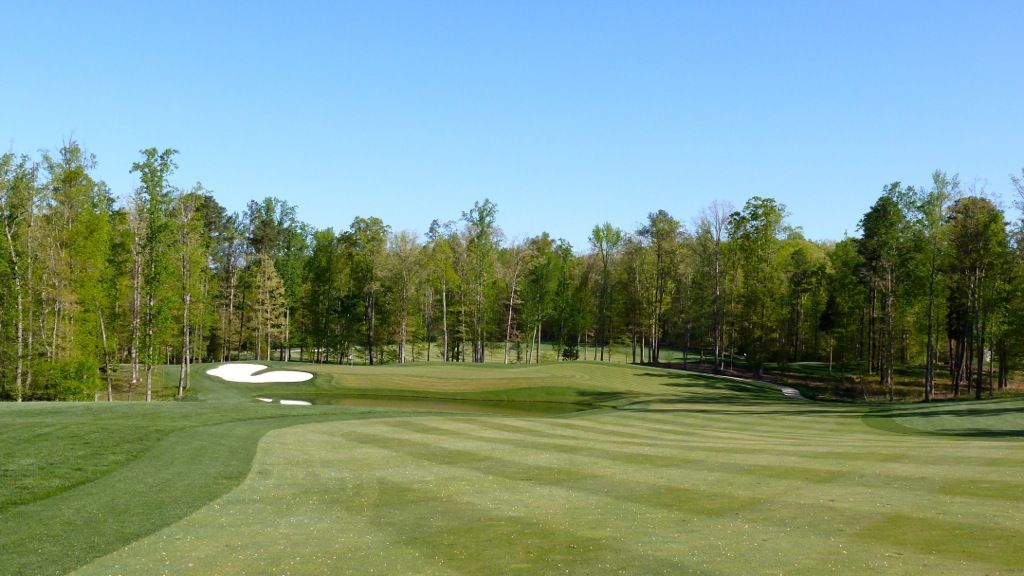
An all-carry approach is required at the 8th as a steep false-front is unforgiving:
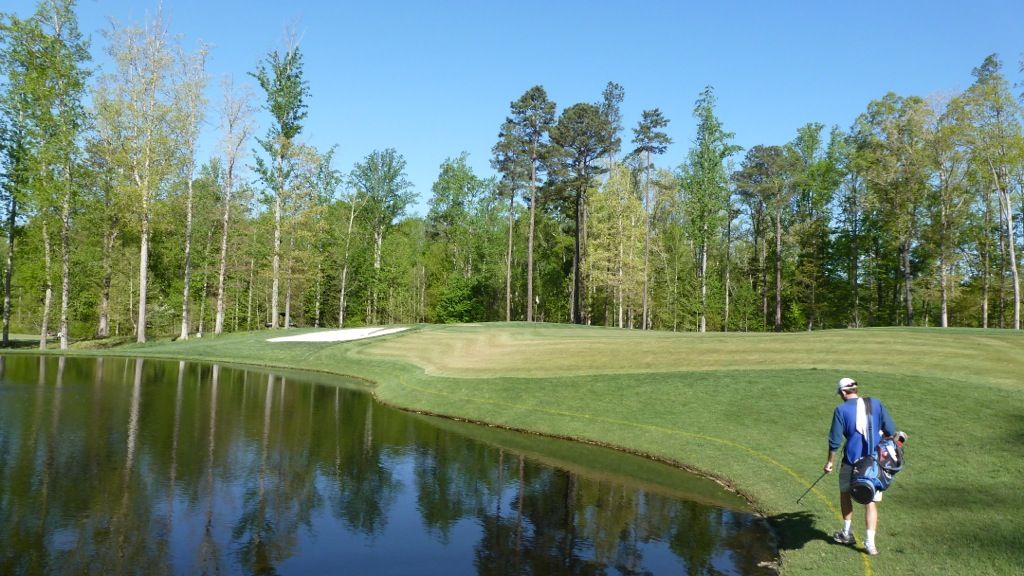
Options, options, options at the par-5 9th! Golfers hoping to reach the green in two will want to challenge the narrow right fairway; those planning on playing the hole as a three-shotter are fine playing left:
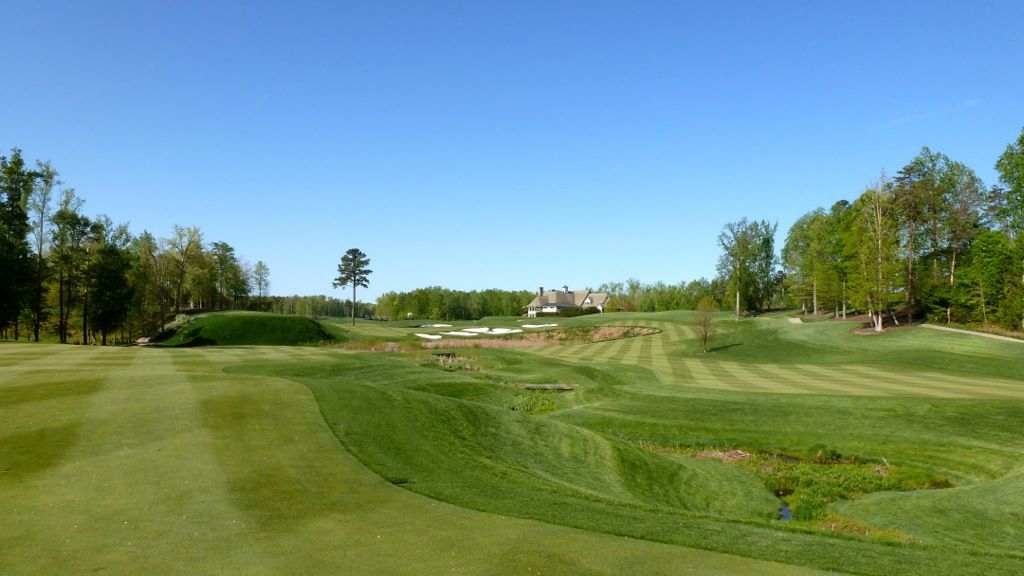
The 9th from behind:
